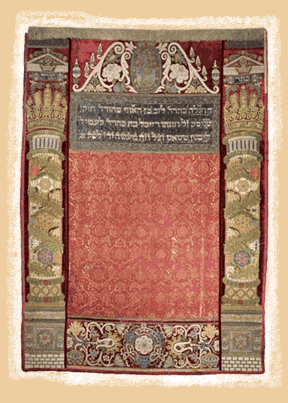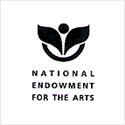Dreams and Prayers of Isaac the Blind
by Osvaldo Golijov ©2002
![]() Yiddishbuk | Prayers of Isaac the Blind |
Yiddishbuk | Prayers of Isaac the Blind | ![]() Echoes of Old Worlds, Portents of New |
Echoes of Old Worlds, Portents of New | ![]() Biographies
Biographies
Eight centuries ago, Isaac the Blind, the great kabbalist rabbi of Provence, dictated a manuscript in which he asserted that all things and events in the universe are the product of combinations of the letters of the Hebrew alphabet. ‘Their root is in a name, for the letters are like branches, which appear in the manner of flickering flames, mobile, yet nevertheless linked to the coal'.
 Synagogue Curtain Bohemia (Prague Old-New Synagogue) 1697 |
|
Isaac's lifelong devotion to his art is as striking as that of string quartets and klezmer musicians. In their search for something that arises from tangible elements but transcends them, they are all reaching a state of communion. Gershom Scholem, the pre-eminent scholar of Jewish mysticism, says that ‘Isaac and his disciples do not speak of ecstasy, of a unique act of stepping outside oneself in which human consciousness abolishes itself. Debhequth (communion) is a constant state, nurtured and renewed through meditation'. How else would one explain the strange life that Isaac led, or the way in which groups of four souls dissolve their individuality into single, higher organisms, string quartets? How else would one explain the chain of klezmer generations that, while blessing births, weddings, and burials, were trying to discover the melody that could be set free from itself and become air, spirit, ruakh?
The movements of this work sound to me as if they were written in three of the different languages spoken by the Jewish people throughout our history. This somehow reflects the composition's epic nature. I hear the prelude and the first movement in the most ancient, Aramaic; the second movement is in Yiddish, the rich and fragile language of a long exile; the third movement and postlude are in sacred Hebrew.
The prelude and the first movement simultaneously explore two prayers in different ways: the quartet plays the first part of the central prayer of the High Holidays, ‘We will observe the mighty holiness of this day', while the clarinet dreams the motifs from ‘Our Father, Our King'. The second movement is based on ‘The Old Klezmer Band', a traditional dance tune, which is surrounded here by contrasting manifestations of its own halo. The third movement was written before all the others. It is an instrumental version of K'vakarat, a work that I wrote a year earlier than Dreams and Prayers for the Kronos Quartet and cantor Misha Alexandrovich. This movement, together with the postlude, bring to conclusion the prayer left open in the first movement.








